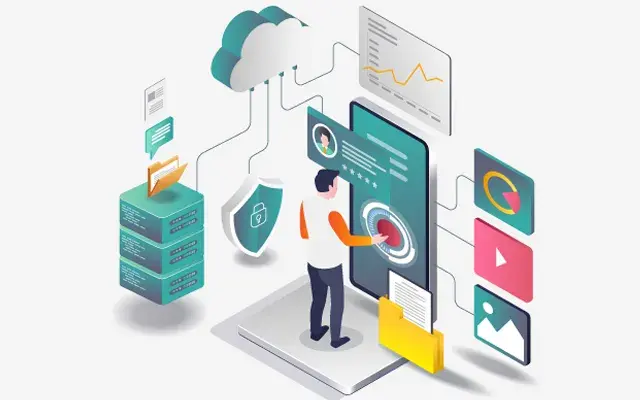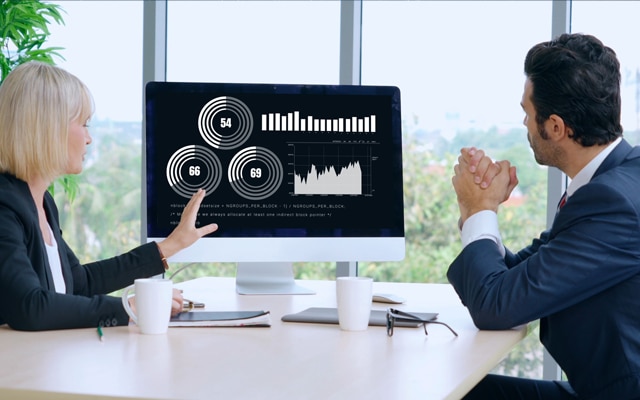Businesses are constantly collecting data on their customers, market research, trends and patterns which has led to Big Data. It refers to large and complex sets of data that cannot be easily processed using traditional data processing tools. It encompasses the volume, velocity, variety, and sometimes the veracity of data. These data sets are typically massive, growing rapidly, and include diverse types of information from various sources. The challenges associated with big data include capturing, storing, analyzing, and visualizing data efficiently. Managing Big Data is easier with dedicated data entry outsourcing services that ensure quick turnaround time and highly competitive pricing. Several trends in the big data landscape are driving innovation and providing valuable insights for organizations.
Four Vs of Big Data
- Volume: The sheer size of the data generated or collected, often ranging from terabytes to petabytes and beyond.
- Velocity: The speed at which data is generated, collected, and processed. With the advent of real-time applications and the Internet of Things (IoT), data is generated at an unprecedented pace.
- Variety: The diverse types of data include structured data (like databases), unstructured data (like text and images), and semi-structured data (like XML files). Big data encompasses a wide range of data formats.
- Veracity: The quality or reliability of the data. This involves dealing with uncertainties in data quality and ensuring that the data can be trusted.
Big Data Trends
Here are some key big data trends that can help businesses bring innovation:
- Edge computing for real-time insights: Business operations undergo a transformative shift with edge computing, as it enables immediate data analysis and provides companies with crucial real-time insights. The rise of edge computing allows organizations to process data closer to the source rather than relying solely on centralized cloud servers. This enables real-time processing of data, which is critical for applications such as IoT devices, autonomous vehicles, and smart cities.
For example, in the manufacturing sector, edge computing is used for predictive maintenance. Sensors on machinery collect data on performance, and the edge devices analyze this data in real time. This allows for the early detection of potential issues, reducing downtime and increasing overall efficiency.
- Advanced analytics with machine learning and AI: Businesses are increasingly using AI and machine learning to connect their expansive big data environments to enhance customer support. Intelligent chatbots and personalized interactions also enhance the ability to derive meaningful insights from large datasets, automate decision-making processes, and uncover complex patterns that may not be apparent through traditional analytics. In the Ecommerce sector, companies like Amazon use machine learning algorithms to analyze user behavior and purchasing history to provide personalized product recommendations. This enhances the customer experience and increases sales.
- Data governance and security: Effective data governance plays a pivotal role in upholding the quality, integrity, and security of organizational data. As the volume and sensitivity of data grow, there’s a heightened focus on data governance and security. Innovations in encryption, data anonymization, and blockchain technology are being used to ensure the privacy and integrity of data, aligning with regulatory requirements.
A clear example of blockchain being used for data governance and security, is the case of IBM Food Trust that uses blockchain to trace the origin and journey of food products throughout the supply chain. This enhances transparency, reduces fraud, and ensures the integrity of information related to the source, production, and distribution of food items.
- Hybrid and multi-cloud architectures: Organizations are adopting hybrid and multi-cloud architectures to leverage the benefits of both on-premises and cloud environments. This approach provides flexibility, scalability, and the ability to choose the most suitable platforms for specific workloads while ensuring data accessibility and security. While hybrid architectures enable scalability by harnessing the benefits of both local and cloud resources, multi-cloud strategies provide the freedom to select the most suitable cloud providers, avoiding vendor lock-in and optimizing costs through competitive pricing models.
A real-life example of an organization adopting hybrid cloud architecture is that of Pinterest. It employs a hybrid cloud strategy by using AWS for its cloud-based infrastructure and maintaining some workloads on its own data centers. This hybrid approach provides flexibility, allowing the platform to balance performance, scalability, and cost-effectiveness.
- Data democratization: Making data accessible to a broader range of users, beyond data scientists and analysts, is a growing trend. Data democratization employs a data architecture specifically tailored to the operational needs of contemporary businesses in real-time scenarios. This architecture is adeptly distributed across both cloud and on-premises environments, facilitating seamless utilization and mobility across various clouds, applications, and networks. Additionally, it accommodates the storage of data at rest.
For instance, Uber has implemented a platform called AthenaX, which enables real-time querying of large-scale datasets. This democratizes access to real-time data for various teams within Uber, facilitating quicker decision-making processes.
- Natural language processing (NLP) for data interaction: Natural language processing (NLP) constitutes a branch of artificial intelligence designed to enable machines to “read” and comprehend text. It allows users to interact with data using conversational language. This trend is making analytics tools more user-friendly and accessible to individuals who may not have a technical background, empowering them to derive insights and make data-driven decisions.
An example for NLP integration with big data is Google’s BigQuery ML, which integrates machine learning capabilities with its big data platform. Users can use SQL queries and natural language to build and deploy machine learning models directly within BigQuery. This simplifies the process of predictive analytics for users without extensive machine learning expertise.
- IoT and big data integration: The proliferation of Internet of Things (IoT) devices is generating vast amounts of data. Integrating IoT data with big data analytics allows organizations to examine data, reveal data trends, find unseen data patterns, find hidden data correlations, and reveal new information. All these benefits help to get better business insights.
In the Retail sector, Amazon Go stores use a network of cameras and sensors to track customer movements and items taken from shelves. IoT devices generate real-time data on customer behavior. Big data analytics is then employed to gain insights into shopping patterns, optimize inventory management, and enhance the overall shopping experience.
By staying abreast of these big data trends, businesses can harness the power of data to drive innovation, enhance decision-making, and gain a competitive edge in today’s dynamic and data-centric business environment. Professional data entry companies clearly understand how significant big data is and how it facilitates innovative ideas and techniques across diverse industries. To ensure growth and innovation, businesses have to leverage big data analytics to its full potential.










